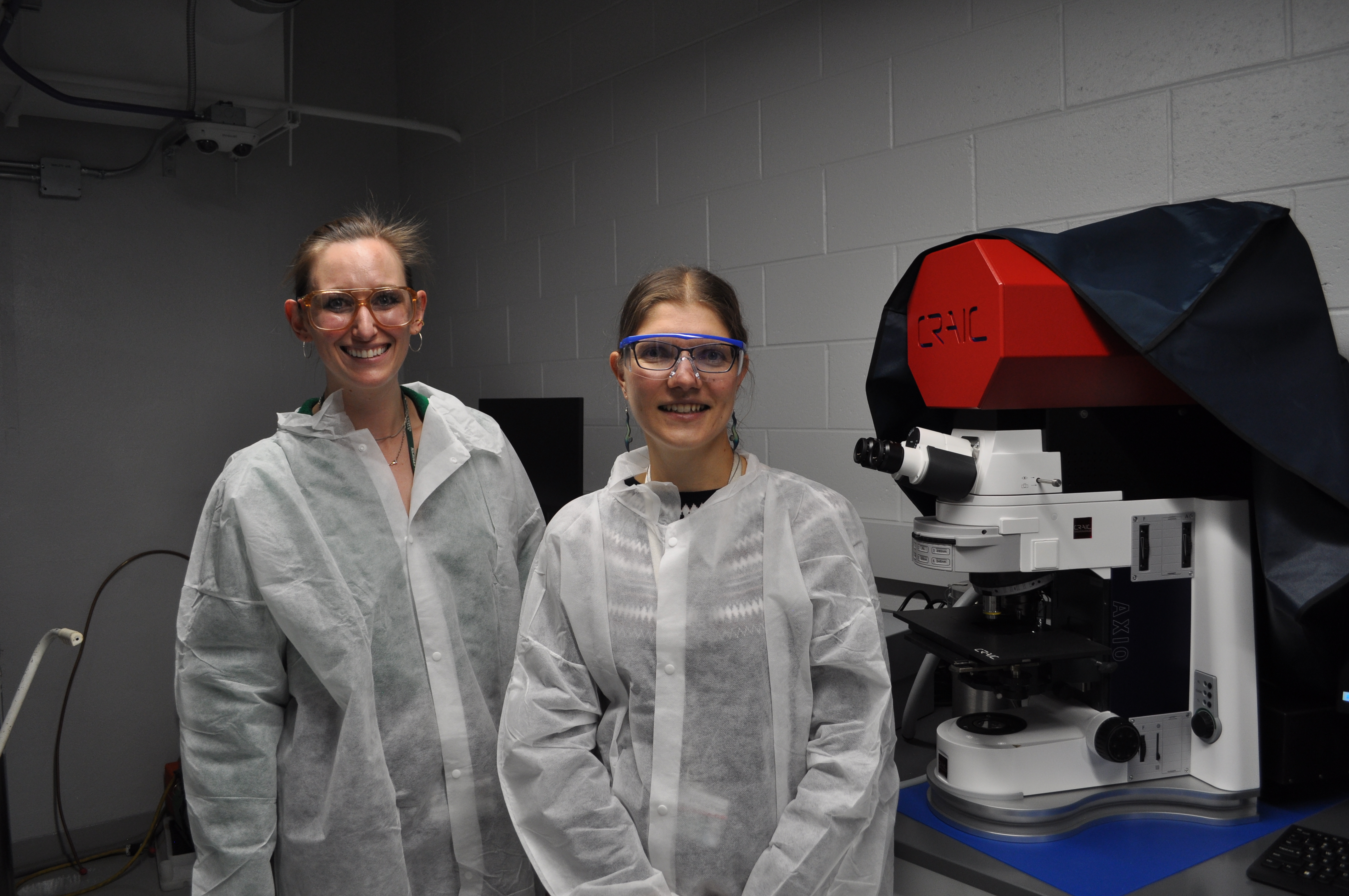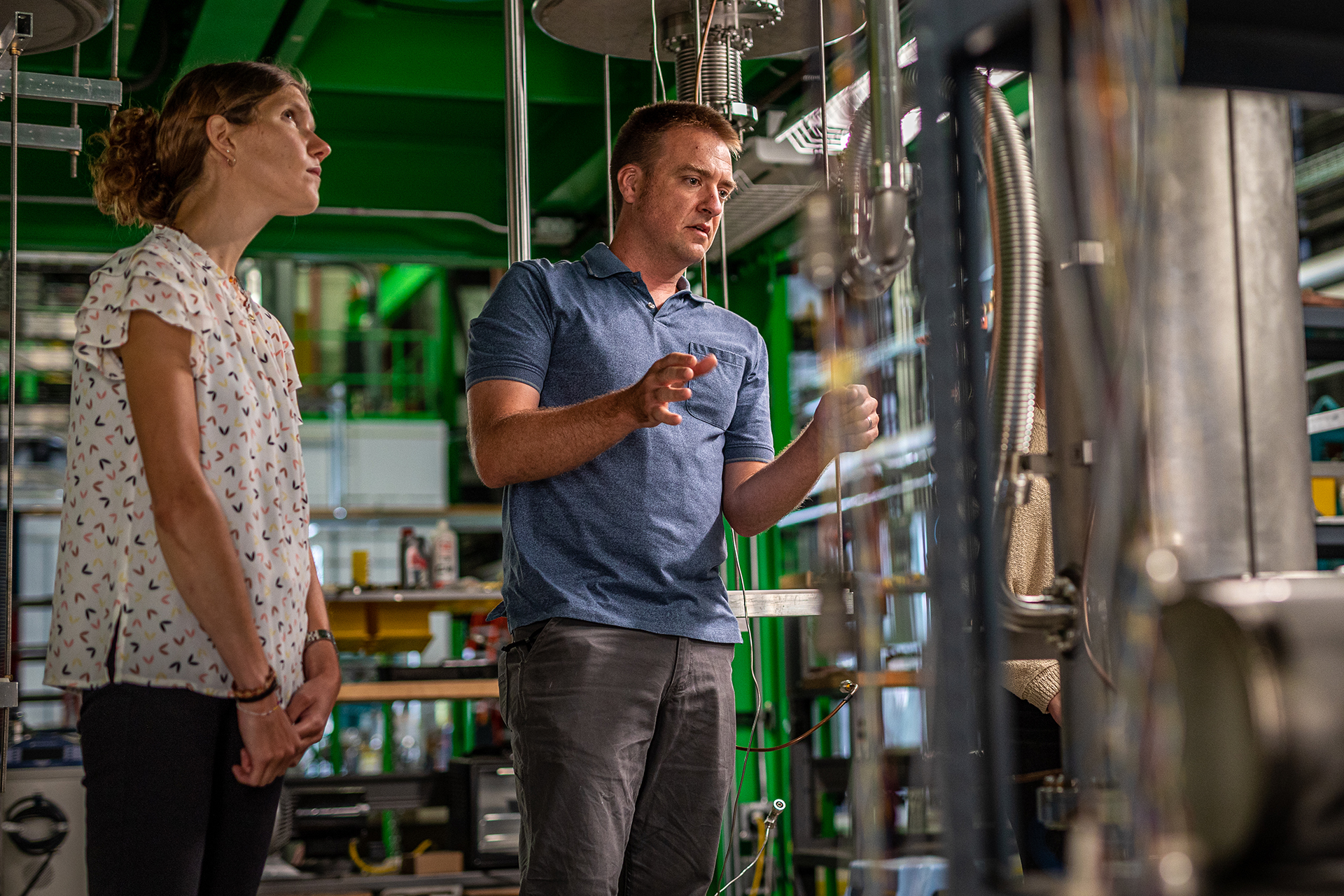The special ingredient in this approach is promethium-149, or 149Pm.
This isotope has promising qualities for targeted radiotherapy — a process that delivers radioactive isotopes directly to cancer cells to damage their DNA.
Supported by a new Strategic Partnership Grant from the Michigan State University Research Foundation, the interdisciplinary team will establish a framework on MSU’s campus that streamlines the development of a 149Pm-based radiopharmaceutical as an effective prostate cancer therapeutic.
This integrated system will use cutting-edge facilities including the Facility for Rare Isotope Beams, or FRIB; the Institute for Quantitative Health Science and Engineering, better known as IQ; as well as newly expanded radiochemistry laboratories in MSU’s Department of Chemistry.
The discoveries made will help improve the survival rate of cancer patients, as well as train the next generation of scientists working to transform novel isotopes into effective drug delivery systems.
“Our farm-to-table approach is unique to MSU, spanning from radionuclide production through preclinical testing,” said Carolina de Aguiar Ferreira, one of the project’s three leads and an assistant professor in the departments of Radiology, Pharmacology and Toxicology and Biomedical Engineering.
In collaboration with Katharina Domnanich and Alyssa Gaiser, both assistant professors and project leads in the Department of Chemistry and FRIB, the team will help establish a platform that can eventually test other promising radionuclides that might be used against a variety of cancers.
“We would love to see our 149Pm project be just the beginning of a wonderful, interdisciplinary collaboration for an isotope production-to-nuclear medicine application pipeline,” Domnanich said.
“We’re excited about the potential to make a real difference in patients’ lives,” de Aguiar Ferreira added.
Packing a radioactive punch
In radiopharmaceutical therapy, radioisotopes are attached to molecules that naturally seek out a disease’s unique biochemical traits within the body.
Like miniature heat-seeking missiles, these can reach cancer cells even if they’ve spread to multiple locations, all while sparing nearby healthy cells.
Recently, the Food and Drug Administration approved a radiopharmaceutical that uses the isotope lutetium-177, or 177Lu, in tandem with a prostate-specific membrane antigen, or PSMA. This is a targetable protein that prostate cancer cells produce at exceptionally high levels.
Though promising, treatments with the lutetium-177-labeled PSMA only extend prostate cancer patient survival by a matter of months. Studies suggest the largest drawback is an inadequate amount of radiation being delivered to cancer sites.
With 149Pm, the MSU team sees an isotope that packs a bigger punch with a higher dose of radiation, alongside other impactful qualities such as its potential to be paired with other cancer-targeting molecules.
“This work brings together expertise in isotope production, separations, radiolabeling, and mouse studies from Katharina, Carolina and myself,” Gaiser said, who often works with 147Pm, another isotope of promethium that can be used in nuclear batteries.
“Starting with 149Pm for prostate cancer treatment, we’re pioneering a comprehensive strategy for developing targeted radiopharmaceutical therapies,” de Aguiar Ferreira offered. “But our vision extends beyond this initial focus.”
A future harvest
Soon, the researchers will begin comparing the efficiency of 149Pm against that of the industry standard, 177Lu. This includes investigating how effective 149Pm is at promoting anti-tumor effects and how the two isotopes impact tumor immune systems.
To acquire 149Pm for study, the project will make use of FRIB, where radioisotopes are produced and harvested.
Through accelerator activities that create ultra-rare isotopes, facilities like FRIB can generate research quantities of scientifically valuable radioisotope byproducts. With the right systems in place, these can be collected and used by researchers in a variety of contexts, from plant science and PET scans to material science and astrophysics.
“Isotope harvesting was started about 10 years ago at FRIB’s predecessor facility, the National Superconducting Cyclotron Laboratory,” Domnanich explained.
“FRIB’s isotope harvesting program is a game-changer for our research, as it gives us the unprecedented opportunity to access and test a wide range of unique isotopes that are simply not available anywhere else,” de Aguiar Ferreira said.
By bridging isotope production with cancer biology and preclinical testing in a single setting, the researchers’ project looks to establish MSU as a preeminent leader in radiopharmaceutical and translational research.
“It is truly novel that we can do a full production-to-preclinical testing investigation of nearly any isotope for medical applications, all on MSU’s campus,” Gaiser said.


